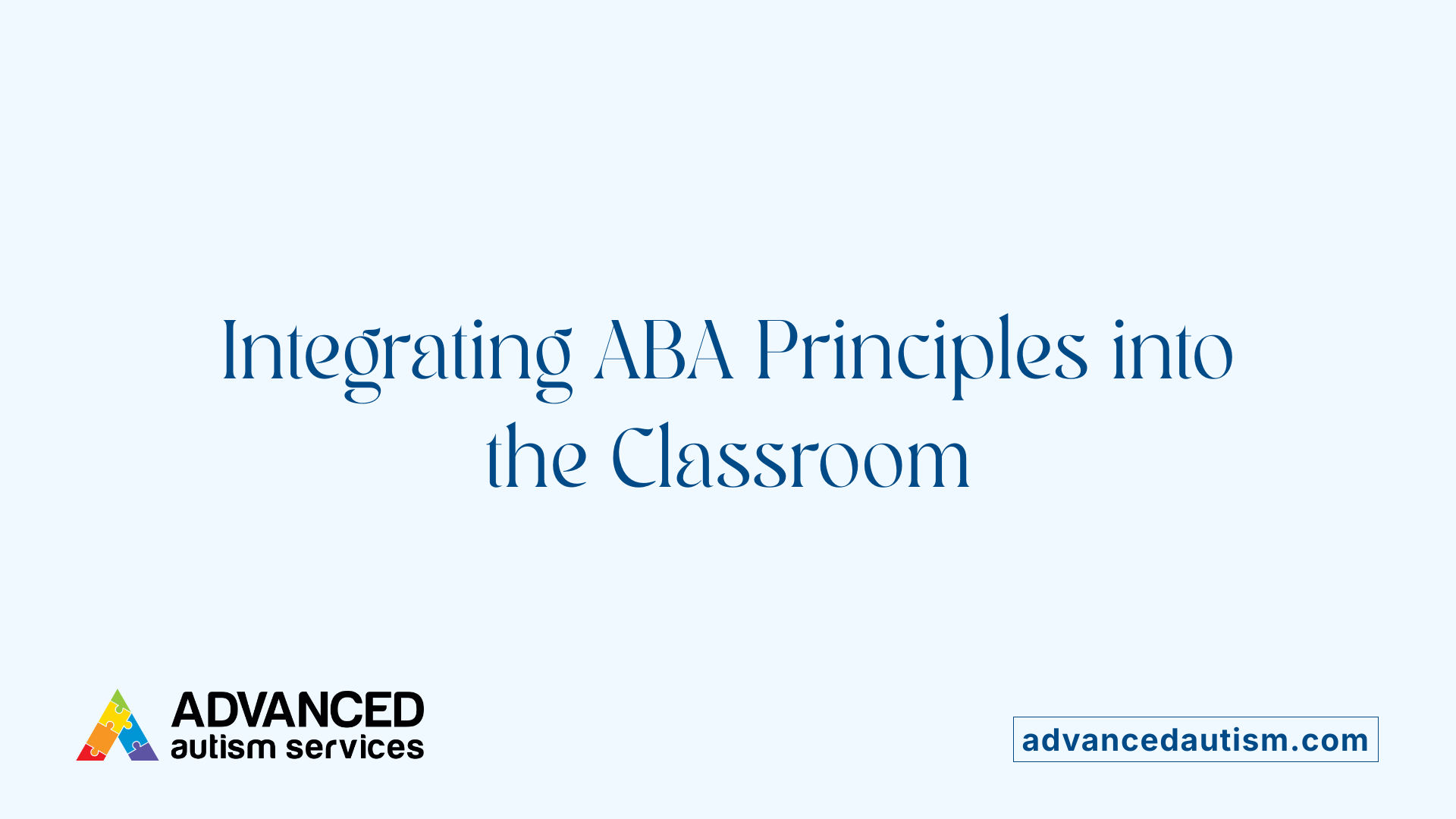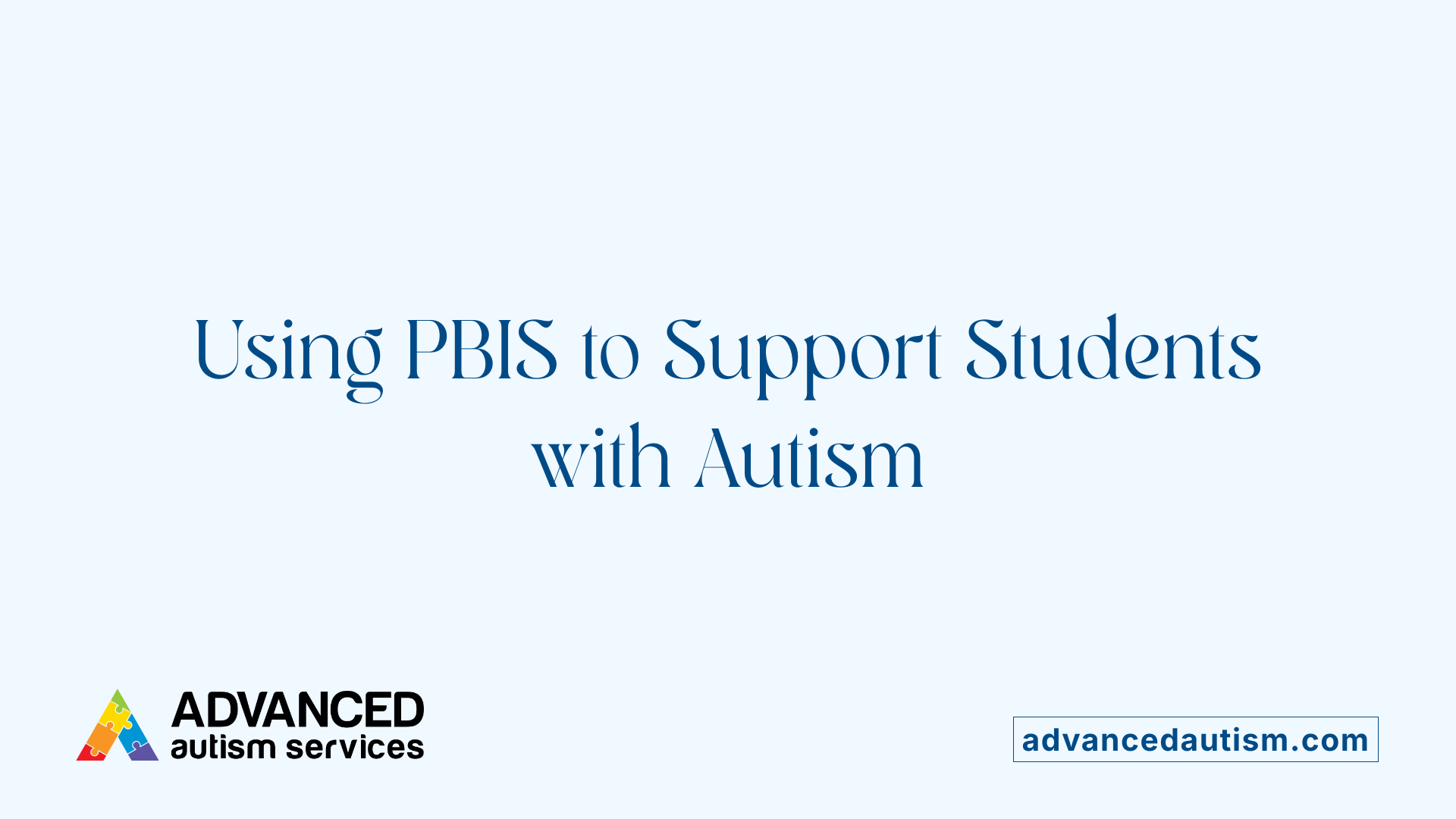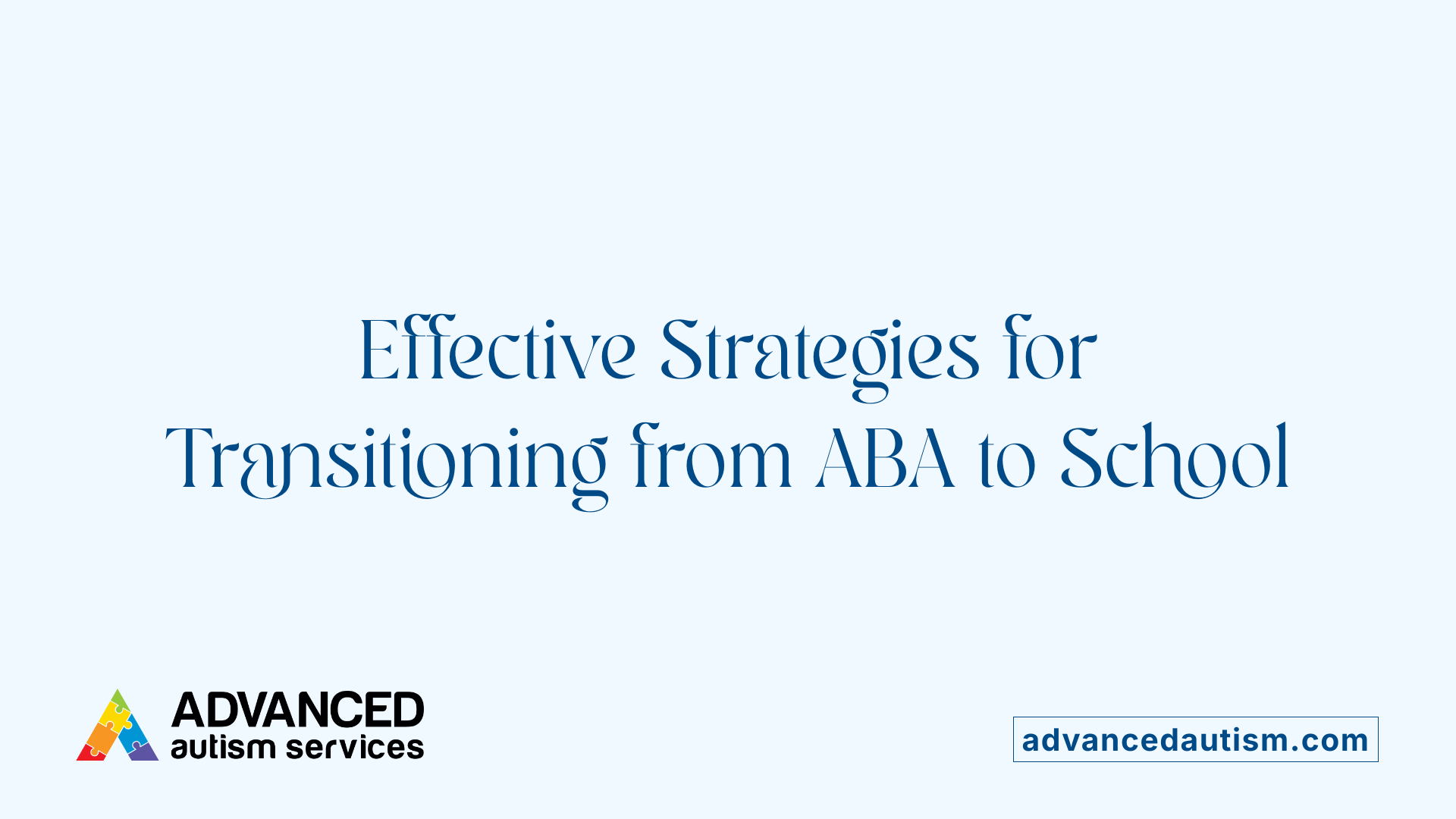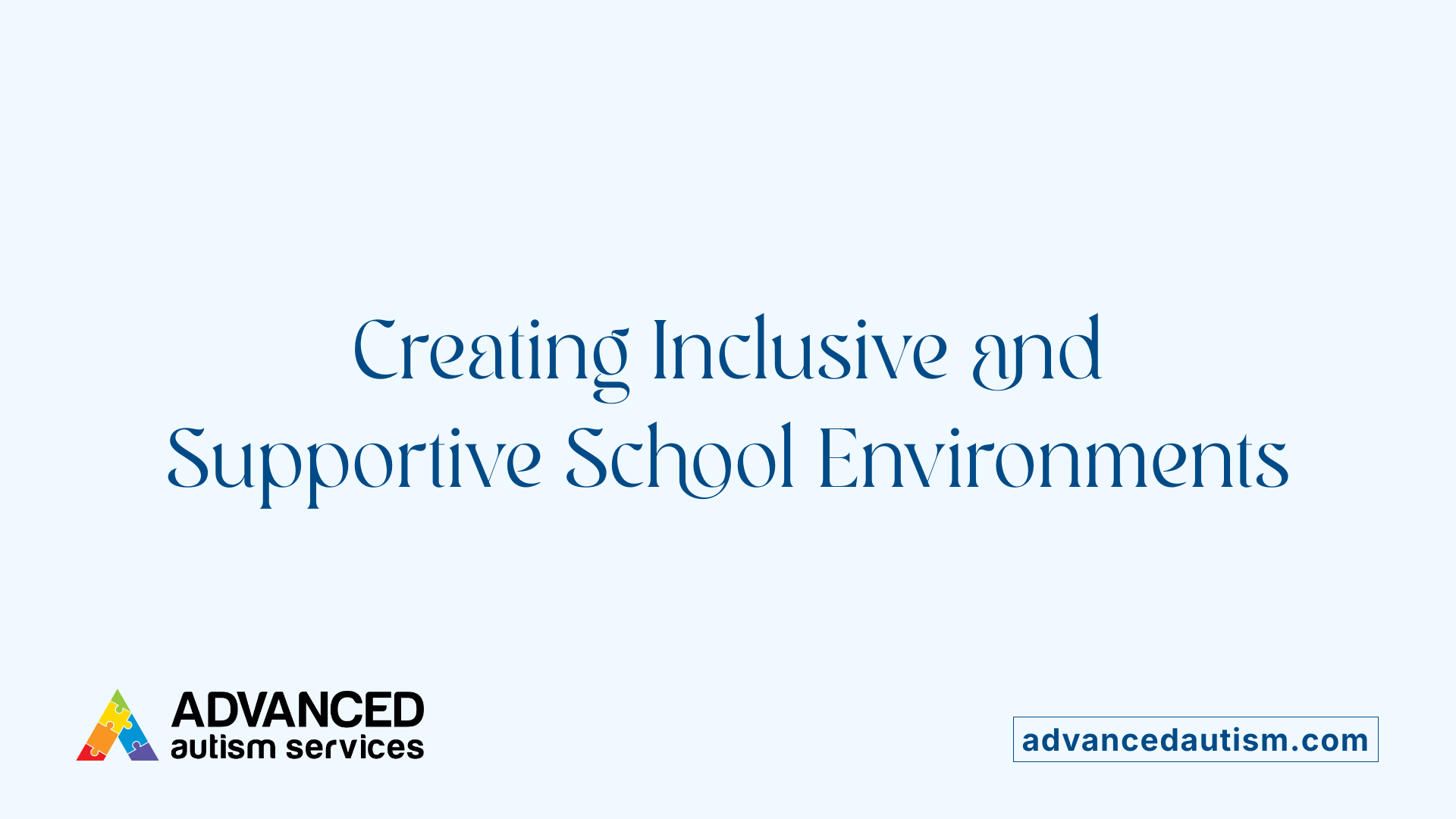How Social School Support Helps Children Navigate Transitions
Supporting Success: Navigating School Transitions for Children with Autism
The Challenge of Transition for Autistic Children
Transitions in education, such as moving from one grade to another or from therapy-based programs to mainstream schooling, can be particularly challenging for children with Autism Spectrum Disorder (ASD). Understanding the unique needs of these children and integrating social and behavioral support within schools are critical steps to fostering successful transitions and helping children thrive academically and socially.
Understanding Autism Spectrum Disorder and School Challenges

How prevalent is Autism Spectrum Disorder among children in Canada?
Autism Spectrum Disorder (ASD) affects approximately 2% of Canadian children and youth. This significant prevalence highlights the necessity for schools to implement specific support strategies tailored to the unique needs of autistic students.
What social and sensory challenges do autistic children face?
Children with ASD often face difficulties with social interactions, such as understanding others’ thoughts and feelings. They may also be highly sensitive to sensory stimuli, including lights and sounds, which can make typical school environments overwhelming.
Why is routine important for autistic children?
Continuity of routines and predictability are particularly important for autistic children. Maintaining consistent schedules and familiar activities helps foster learning while reducing anxiety, allowing these children to better engage and feel secure in the educational setting.
How do limited school accommodations impact autistic children?
Many schools offer limited accommodations, such as adjustments to the physical environment or classroom supports. This lack of support can contribute to increased absenteeism among autistic children, driven in part by internalized anxiety resulting from unmet needs.
What challenges do autistic children face in educational settings?
Autistic children often experience difficulties with social interactions, interpreting others’ emotions and thoughts, and can be sensitive to sensory inputs like lights and sounds. These challenges, combined with the importance they place on continuity and predictability of routines, mean that schools with limited accommodations can increase anxiety and absenteeism for these children.
Applied Behavior Analysis (ABA) Therapy Explained

What is applied behavior analysis (ABA) therapy?
Applied Behavior Analysis (ABA) therapy is a scientifically supported approach that focuses on understanding and modifying behavior using principles of learning. It aims to improve a wide range of skills by reinforcing positive behaviors and reducing those that may interfere with learning and social integration.
How does ABA therapy work?
ABA therapy employs several key techniques, including:
- Positive reinforcement: Rewarding desirable behaviors to encourage their repetition.
- Modeling: Demonstrating behaviors for the child to imitate.
- Prompting: Providing cues or assistance to help the child perform a behavior.
- Fading: Gradually reducing support as the child learns to perform the skill independently.
These strategies are used to teach communication, social interaction, attention, and daily living skills crucial to functioning.
Why is individualized intervention important?
ABA therapy typically involves one-on-one sessions tailored to each child's unique needs. This individualized approach allows for targeted support with clear goals, ensuring interventions address specific behavioral challenges and skill deficits effectively. Such personalization can be difficult to replicate in traditional classroom settings but is vital for teaching foundational skills necessary for academic success and social integration.
What skills does ABA therapy target?
ABA focuses on developing communication and social skills, enhancing attention span, and teaching daily living activities. The therapy is designed not only to manage symptoms associated with Autism Spectrum Disorder but also to close ability gaps between children with ASD and their peers, promoting greater inclusion in less restrictive environments such as mainstream schools.
How ABA Therapy Supports Children with Autism

How does ABA therapy help individuals with autism?
ABA (Applied Behavior Analysis) therapy supports children with Autism Spectrum Disorder (ASD) by increasing positive, helpful behaviors while reducing disruptive or harmful ones. It focuses on understanding how environmental factors influence behavior and uses techniques like positive reinforcement, shaping, prompting, and fading to promote desirable actions.
Increasing positive behaviors
ABA therapy targets the development of crucial skills such as communication, social interaction, attention, and daily living abilities. Through individualized one-on-one interventions, it helps children improve emotional regulation and independence, fostering their capacity to succeed in academic and social settings.
Reducing harmful or disruptive behaviors
By identifying triggers and teaching alternative, adaptive behaviors, ABA therapy diminishes behaviors that interfere with learning and social engagement. This reduction not only enhances overall functioning but also supports children in environments like schools, improving their participation and well-being.
Developing language, social, academic, and life skills
Therapy sessions are tailored to each child's specific needs and may include teaching foundational skills required for success in school and community integration. This comprehensive approach facilitates progress across communication, socialization, academic tasks, and essential life skills.
Importance of early and consistent intervention
Research highlights that intensive and early ABA therapy leads to significant improvements. Consistent intervention ensures that skills are generalized across settings, which maximizes long-term developmental gains and helps close the ability gap between children with ASD and their peers.
Overall, ABA therapy serves as a powerful tool to enhance learning and developmental outcomes for children with autism by transforming behavior through scientific, individualized, and supportive methods.
Collaborative Teams: Professionals and Families in ABA Therapy
Who provides ABA therapy and how can families find qualified professionals?
ABA therapy is delivered by a variety of licensed and trained professionals, each playing a distinct role in supporting children with Autism Spectrum Disorder (ASD). Primary providers include Board Certified Behavior Analysts (BCBAs), who design and oversee individualized treatment plans. Registered Behavior Technicians (RBTs) implement these interventions directly, often working under the guidance of BCBAs. Additionally, licensed therapists with specialized training in ABA also contribute therapeutic support.
Families seeking ABA therapy should connect with reputable autism organizations and consult professional licensing boards to identify certified and experienced providers. Many regions maintain directories of qualified practitioners, which can help in locating local resources. Verifying credentials is essential to ensure that the providers follow evidence-based practices that promote meaningful skill development and behavioral improvements.
Collaborative efforts between families and ABA professionals form the cornerstone of successful interventions. Support organizations not only assist in provider selection but may also offer training and resources for parents, fostering an environment where therapy goals are reinforced at home and in other settings. This partnership maximizes the positive impact of ABA therapy and ensures continuity of care.
By working closely with credentialed professionals and support networks, families can confidently navigate the process of finding effective ABA therapy tailored to their child's unique needs.
Techniques and Methods Employed in ABA Therapy
What are the typical methods and techniques used in ABA therapy?
Applied Behavior Analysis (ABA) therapy uses several structured and evidence-based methods to support children with Autism Spectrum Disorder. One commonly used method is discrete trial training, which breaks skills into small, manageable steps and teaches them using repeated practice in a controlled setting. This allows for consistent reinforcement and measurable progress.
Natural environment teaching is another approach, where learning occurs during everyday routines and activities, enhancing generalization of skills across settings. This contrasts with the highly structured discrete trials by promoting spontaneity and real-life application.
Behavior chaining is used to teach complex actions by linking individual behaviors together in sequence, helping children learn multi-step tasks. Prompting and fading are techniques to guide behavior initially and gradually reduce assistance, encouraging independence.
ABA heavily utilizes reinforcement strategies, primarily positive reinforcement, where desirable behaviors are rewarded to increase their occurrence. The therapy follows the behavior analysis model focusing on the ABCs — Antecedent (what happens before the behavior), Behavior, and Consequence — to understand and shape behaviors effectively.
Additional techniques include modeling (demonstrating desired behaviors), task analysis (breaking down tasks into smaller parts), and extinction (reducing unwanted behaviors by withholding reinforcement). These methods collectively create a tailored and systematic intervention that aims to improve communication, social skills, daily living abilities, and reduce challenging behaviors in autistic children.
Incorporating ABA Principles Within School Settings

What are the benefits and challenges of integrating ABA in schools?
Applied Behavior Analysis (ABA) therapy is designed to improve communication, social interaction, attention, and daily living skills in children with Autism Spectrum Disorder (ASD). Introducing ABA principles in schools can enhance foundational skills that serve academic success and social integration. ABA’s individualized, one-on-one support model effectively targets specific behavioral challenges and promotes skill generalization across settings.
However, challenges arise due to differences between ABA and school environments. ABA’s remedial goals often differ from standard curricula, and structured one-on-one support is difficult to replicate in classrooms. Behavior support plans used in ABA may not easily transfer to schools, requiring adaptation to classroom-based group settings.
How do ABA therapists and educators collaborate?
Successful integration demands strong collaboration between ABA therapists and educators. Sharing goals and strategies allows educators to apply ABA techniques effectively within classrooms. Collaboration often includes training school staff on individualized ABA strategies, conducting student observations, and using data from assessments such as VB-MAPP to guide supports.
Transition planning is essential, where ABA providers and schools align on discharge criteria and milestones. This partnership respects both ABA expertise and educational priorities, ensuring consistent support continuity for the child.
How can supports be tailored to school environment constraints?
Due to staffing and setting differences, schools typically provide support through small groups or individualized education plans (IEPs), not intensive one-on-one ABA sessions. Therefore, ABA techniques like positive reinforcement, prompting, and visual supports must be adapted to meet the broader classroom context.
Integrating ABA into school routines maximizes generalization of skills by embedding interventions in daily activities. Training educators and involving parents strengthens support consistency while fostering an inclusive environment that aligns with the child’s needs.
This structured, collaborative, and flexible approach helps bridge the gap between ABA therapy and school curricula, ultimately enhancing outcomes for autistic children within educational settings.
Comprehensive Behavioral Supports: The Role of PBIS in Schools

What is PBIS and how did it develop?
Positive Behavioral Interventions and Supports (PBIS) was developed in the 1980s as a data-driven behavioral framework designed to support students with behavioral disorders. It integrates behavioral and academic supports into a comprehensive system aimed at prevention and consistent reinforcement of positive behaviors.
What are the three tiers of PBIS support?
PBIS employs a three-tiered model to address varying student needs:
| Tier Level | Description | Application Example for ASD Students |
|---|---|---|
| Universal (Tier 1) | School-wide strategies for all students | Establishing clear rules and routine expectations |
| Targeted (Tier 2) | Additional supports for students needing more help | Small group social skills training and reinforcement |
| Intensive (Tier 3) | Individualized, intensive interventions | One-on-one behavioral plans tailored to specific challenges |
How does PBIS promote routine, consistency, and social skills for students with ASD?
Students with Autism Spectrum Disorder benefit from predictable environments, and PBIS emphasizes routine and consistency through explicit behavioral expectations and clear protocols. By defining expected behaviors concretely and delivering consistent reinforcement or correction, PBIS reduces anxiety and supports learning.
Additionally, PBIS integrates evidence-based practices suited for students with ASD such as modeling, prompting, video modeling, and visual supports. These strategies aid in social skill acquisition across diverse school settings including classrooms, hallways, and cafeterias.
Why is parental involvement important in PBIS?
Parental involvement plays a critical role in PBIS effectiveness. Collaboration between families and schools aligns strategies and reinforces consistent behavioral expectations and supports outside of school hours. This partnership enhances the social and academic success of students with autism by maintaining continuity in behavioral interventions and promoting generalization of skills.
Through these methods, PBIS serves as a versatile and supportive framework that addresses the unique behavioral and learning needs of students with ASD within inclusive educational environments.
Strategies for Successful Transitions from ABA to School Programs

Individualized Transition Planning
Transitioning autistic children from Applied Behavior Analysis (ABA) therapy to school programs requires careful, individualized planning. Each child's needs vary, so it's essential to consider differences in curriculum, behavioral support plans, and staffing patterns to ensure a smooth shift from one setting to another.
Aligning ABA Goals with School Curricula and Behavior Plans
ABA therapy typically targets remedial and functional skills, which may not directly match school curricula. Effective transition involves communicating and adapting these ABA goals to align with educational expectations. Similarly, behavior support plans used in ABA must be tailored to fit the school environment, drawing upon data, evidence-based practices, and the student's unique needs.
Visiting and Training School Staff with ABA Providers
A beneficial strategy involves having school personnel visit the student in their current ABA setting before school entry. This exposure allows staff to familiarize themselves with the child's routines and behaviors. Additionally, ABA providers can offer tailored training to school staff on intervention techniques and strategies proven effective for the child, fostering continuity and coherence in support.
Use of Assessments like VB-MAPP
Incorporating tools such as the Verbal Behavior Milestones Assessment and Placement Program (VB-MAPP) aids in measuring the child's readiness for school transition. These assessments offer clear discharge criteria and timelines, helping to guide decisions and set individualized goals throughout the process.
Importance of Respecting Differing Professional Perspectives
Successful transitions demand collaboration between ABA providers and school personnel, recognizing and valuing their differing viewpoints. While ABA professionals may see the transition as a service transfer based on milestone achievement, schools perceive it as the beginning of systematic inclusion. Aligning these perspectives promotes a shared goal and ensures consistent support for the child's development.
Building Inclusive and Supportive School Environments

Creating Sense of Belonging Through Play-Based and Visual Supports
Inclusive school environments are essential for autistic children to feel connected and engaged. Utilizing play-based learning activities encourages interaction in a natural and enjoyable way, providing opportunities for practicing social skills in a low-pressure setting. Visual supports, such as schedules and clear signage, help establish predictability and structure, which are especially comforting to children with ASD. These strategies foster a sense of belonging and improve participation.
Enhancing Peer Interactions and Reducing Anxiety
Peer interaction is critical for social development but can be challenging for autistic students. Schools that promote inclusive social opportunities and implement predictable routines help reduce anxiety that may arise from change or sensory sensitivities. By designing activities that encourage collaboration and using explicit behavioral expectations, children with autism can build friendships and practice social communication in supportive settings.
Supporting Caregivers’ Emotional Regulation to Aid Child Success
Caregivers play a crucial role in their child's school success by modeling emotional regulation and providing consistent support. When parents and educators collaborate, they create a stable environment that helps children manage overwhelming emotions. This partnership supports resilience and enhances both academic performance and social adaptability.
Promoting Skill Generalization Across Environments
Effective education for autistic children emphasizes transferring skills from one setting to another. Strategies like Applied Behavior Analysis (ABA) and Positive Behavioral Interventions and Supports (PBIS) promote the generalization of communication, daily living, and social interaction skills. When schools and caregivers work together to align goals and use consistent methods, children are better able to apply learned skills across classrooms, playgrounds, and home environments.
Together, these supportive approaches contribute to an inclusive school atmosphere that recognizes the unique needs of autistic students and supports their overall development and well-being.
Supporting Smooth Educational Transitions for Children with Autism
Successfully navigating school transitions for children with autism requires more than academic preparation; it demands a holistic approach that integrates behavioral therapies like ABA, structured support frameworks such as PBIS, and inclusive social environments. Collaboration among educators, therapists, parents, and the community fosters continuity, reduces anxiety, and enhances both learning and social integration. Tailoring supports, maintaining routines, and preparing school staff equip children with the skills and confidence to thrive as they move through their educational journey.
References
- Expert insight: How to support autistic children heading back ...
- Can ABA Therapy Replace School?
- Transitioning from ABA Programs to School Programs
- Positive Behavioral Interventions and Supports
- Applied Behavior Analysis (ABA)
- ABA Techniques: Strategies for Behavior Analysts - GSEP Blog
- Applied Behavior Analysis (ABA)
- ABA Techniques: Strategies for Behavior Analysts - GSEP Blog
- Applied Behavior Analysis (ABA)







